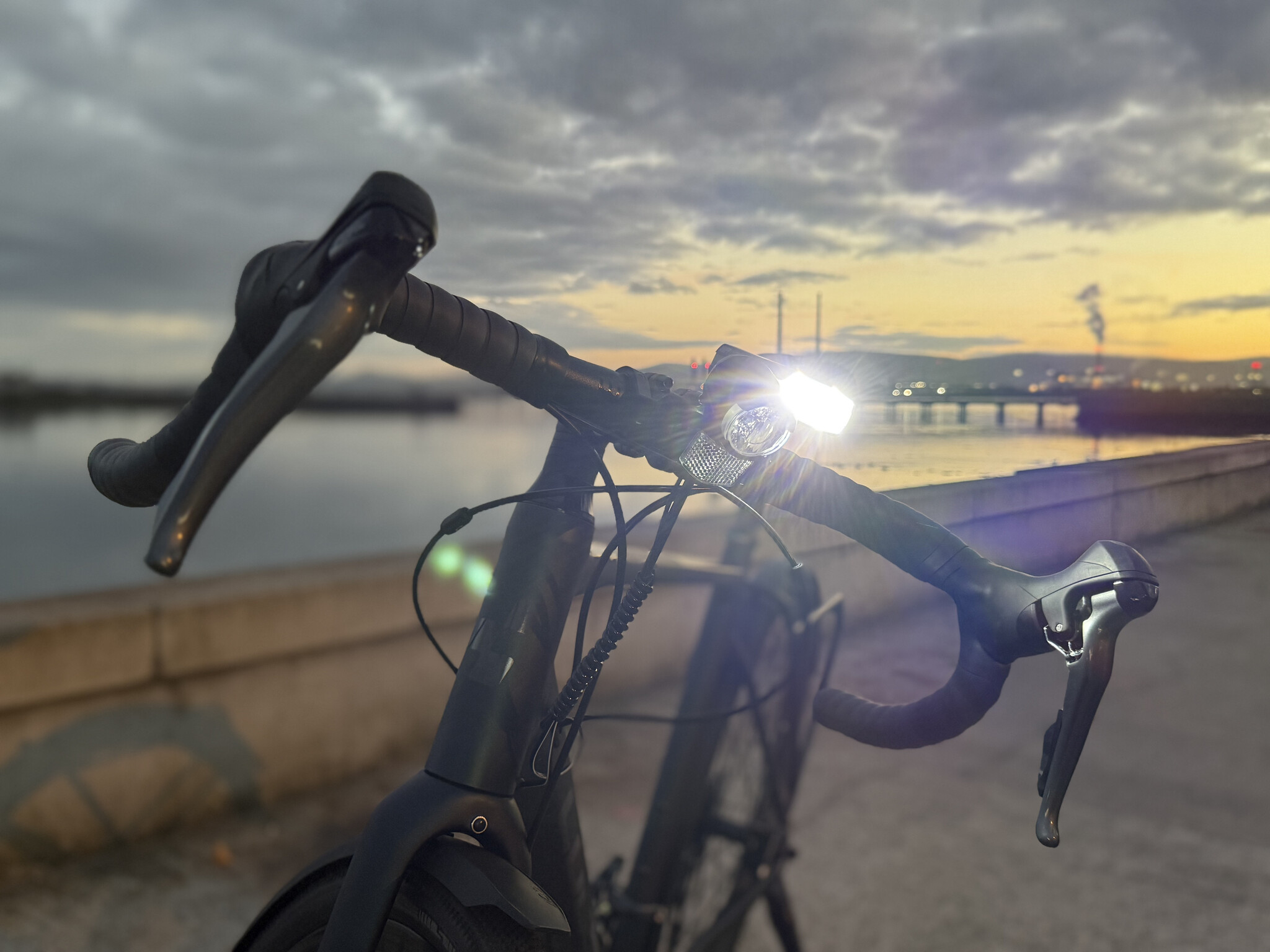Cycling Safely Through Darker Days: Tips for Choosing Bike Lights
- Posted on
- By Marius @ 360 Cycles
- 0

I’m one of the loyal cyclists commuting 14 km daily on North Dublin roads all year around. In October, cycling conditions change significantly. Not only does the weather get colder, but it also gets darker earlier. Cycling lanes and side roads become filled with flashing white and red lights. Some are impossible to miss, some are dimmer, and others, perhaps without realising it's darker, have no lights at all.
Car drivers often struggle to see cyclists even when it starts getting dark, before it is completely night. Bike lights prevent accidents.
When choosing lights for your bike, there are a few important factors to consider:
- Brightness – measured in lumens
- Light modes – flashing, dim mode, high beam
- Battery duration – in each mode
- Installation bracket – secure but easy to clip on/off
- Warranty and aftercare policy
- Price points

Brightness - Measured in Lumens
As a reference, a car headlight produces around 1000 lumens.
For cycling on well-lit city roads, you only need to make yourself visible. There’s no need to light up the road ahead. A 100-400 lumen light is perfect for this. Typically, the front light outputs more lumens than the rear because the front uses white light versus the rear’s red light. A good rear light is around 100-200 lumens, which is enough to ensure you’re visible to drivers coming from behind.
For riding in dark, unlit areas, a light of 400-800 lumens is ideal. From 400 lumens onwards, the light becomes strong enough to illuminate the road in front of you, helping you see clearly.
For high-speed riding in dark or off-road conditions, nothing less than 800 lumens will be sufficient. You’ll need to see far enough ahead to respond to obstacles or changes in the terrain quickly. Less than 800 lumens can reduce your reaction time.
Light Modes – Flashing, Dim Mode, High Beam
A good light set should offer at least these three modes. Flashing mode is especially effective—though in some countries it is restricted due to its potential to disrupt. The optimal setup is a flashing rear light and a constant mode for the front light. Flashing front lights can sometimes affect your own vision, so be mindful of that.
Battery Duration in Each Mode
In flashing mode, the battery usually lasts 10 times longer than in constant mode. Here’s one example, but most lights follow a similar pattern: high beam lasts 2 hours, dimmed mode lasts 4 hours, and flashing mode lasts 60 hours. For regular cyclists, it’s a good idea to aim for a rechargeable battery option.

AMPP 200 front light run time based on mode.
Installation Bracket
Different manufacturers use different brackets, which are a crucial part of the bicycle light setup since they secure the light to your bike. A good bracket holds the light securely, makes it easy to clip the light on and off when needed, and allows for flexible installation locations (handlebars, seat post, rear stays).
Warranty and Aftercare Policy
If you decide to invest in a quality light set, check the warranty and replacement policy. Some brands, like CatEye, offer instant replacement without questions as long as it’s within the warranty period. Having this backup option is a nice bonus when tech issues arise.
Price points
- €20: A budget light set that meets road safety rules.
- €30: A rechargeable battery light with ~80 lumens brightness.
- €40 - €60: The optimal light choice for commuting 100 - 200 lumens and long-lasting battery.
- €100 - €250: A light set for riding in pitch-dark conditions or off-road.
Battery Maintenance Tips
It’s common for lights that worked fine one year to no longer function the next. This is often due to being stored for long periods with a flat battery. To maintain a healthy battery, keep the charge between 20% and 85%. It’s okay to charge it to 100%, but make sure to recharge when the indicator shows it’s running low. Before storing the light for extended periods (like 2 months or longer), charge it to about 70% to ensure it will work when you need it. This applies to all lithium batteries in lights, phones, and electric bikes.
Stay safe and happy cycling!












Comments
Be the first to comment...